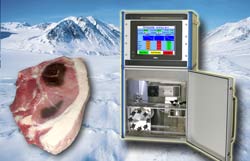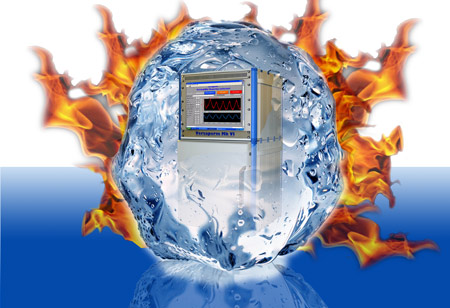

 Freezer Burn is caused by water loss from the foods and although it isn’t usually harmful, it puts buyers off with its unpleasant flavours and by drying out and toughening the food. The cause is not the product, or the freezer, but, surprisingly, the packaging.
Freezer Burn is caused by water loss from the foods and although it isn’t usually harmful, it puts buyers off with its unpleasant flavours and by drying out and toughening the food. The cause is not the product, or the freezer, but, surprisingly, the packaging.
Although most packaging is excellent as a barrier to water as a liquid, there is little or no correlation between its ability to seal against liquid and its ability to seal against vapour.
The only way to be overcome the problem is to test the packaging and its seal. 
Our WVTR (Water Vapour Transition Rate) permeability meter is versatile, fast, reliable, gives highly reproducible results and can be used to test virtually any type of packaging and with, at most, minimal training. It allows the temperature and humidity of the sample to be accurately controlled.
Simply using the most appropriate materials and correctly sealed packaging will go a long way to overcoming the problems of Freezer Burn.
We offer a laboratory testing service for companies who test too few samples to make the purchase of equipment viable. Where required by legislation our testing service also includes gravimetric testing of sachets, pouches and other products/materials.
Freezer Burn appears as greyish-brown leathery spots on frozen food such as food such as meat, fish, pizzas or frozen meals. It arises when water evapourates or sublimes from the food – either permeating through the packaging or when in contact with dry air. The change in colour is due to chemical changes in the food's pigment and, although unpleasant it does not, by itself, make food unsafe – merely unsightly and unpalatable.
Click here for an article of Freezer Burn
Click her to read more about Freezer Burn (Wikipedia)